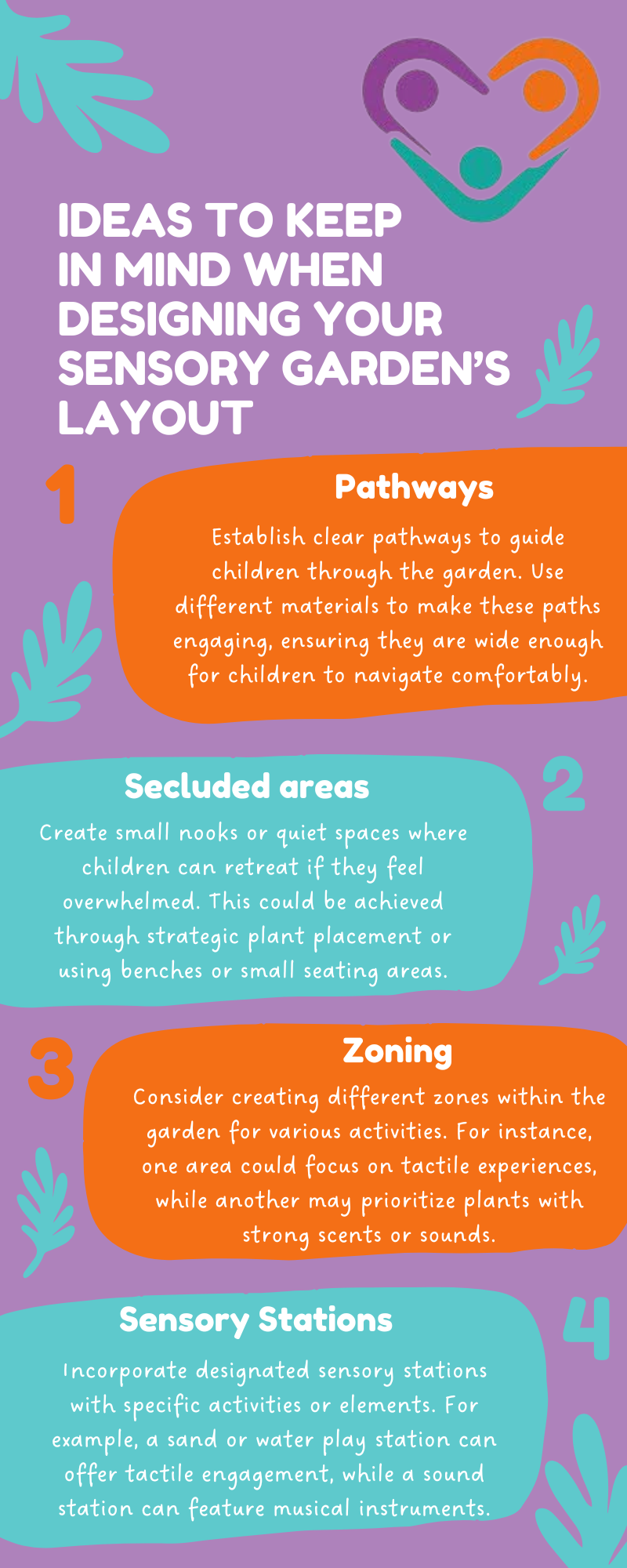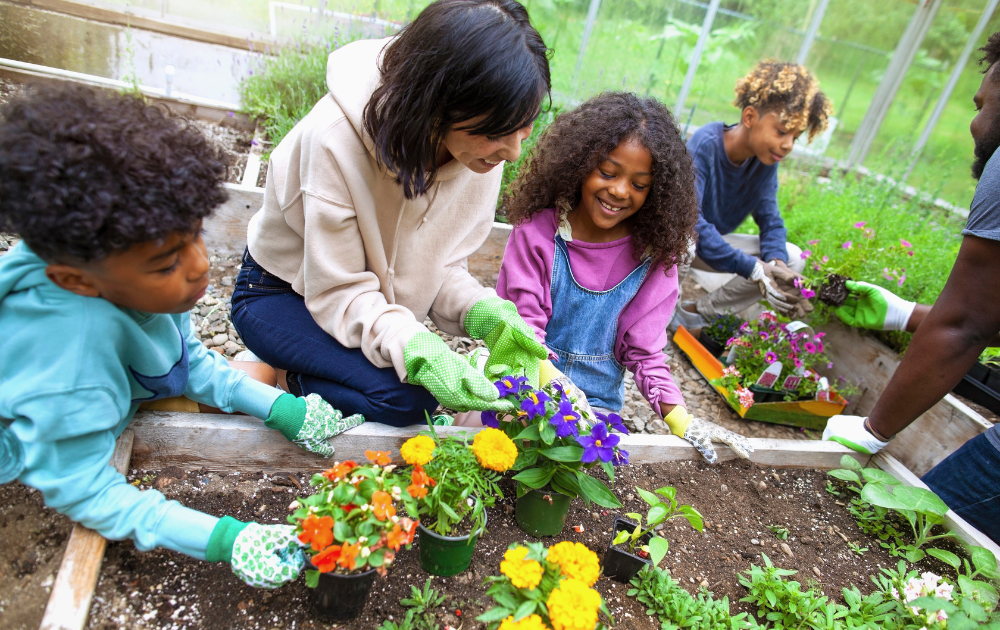Creating a sensory garden for children with autism can provide them with a safe and enriching space to explore their senses and engage with the natural world. Sensory gardens are designed to stimulate the senses through various elements that encourage touch, sight, sound, taste, and smell.
Integrating these sensory experiences allows caregivers to help autistic children improve their sensory processing skills while also offering a therapeutic environment where they can play, learn, and relax.
Understanding the Purpose of a Sensory Garden
A sensory garden is more than just a collection of plants; it’s a thoughtfully designed space that caters to the unique sensory needs of children, particularly those with autism.
These gardens aim to create an environment that can help manage anxiety and stress, improve focus, and promote physical activity. Each element of the garden plays a role in encouraging sensory exploration.
For children with autism, sensory gardens can serve multiple purposes such as:
- Encouraging Exploration: The varied textures, colors, and smells in a sensory garden invite children to explore their surroundings in a hands-on way, which can be especially beneficial for those who may have sensory sensitivities.
- Enhancing Communication Skills: Engaging with different elements of the garden can provide opportunities for children to communicate their preferences, likes, and dislikes, thereby enhancing their communication skills.
- Promoting Social Interaction: Sensory gardens can serve as a shared space for children to play together, fostering social skills and collaborative play.
- Fostering Independence: By creating a safe and predictable environment, children can learn to explore independently, gaining confidence in their abilities.
Key Elements of a Sensory Garden
While designing a sensory garden, it’s essential to include various elements that stimulate different senses. Here are the main sensory categories to consider, along with ideas for incorporating them into the garden:
Touch
Touch is one of the most significant senses for children, and providing a variety of textures can be both calming and exciting. Incorporate materials such as:
- Soft Grasses: Using different types of grass or soft ground cover can create inviting areas for children to walk or roll on.
- Textured Pathways: Paths made of materials like smooth pebbles, sand, or rubber mulch can offer diverse tactile experiences.
- Sensory Plants: Choose plants with interesting textures, such as lamb’s ear (with its soft leaves) or aloe (with its spiky surface).
Sight
Visual stimulation is crucial in a sensory garden, and incorporating vibrant colors and visual interest can capture a child’s attention. Here are some ideas:
- Colorful Flowers: Use a variety of flowering plants to provide bursts of color. Bright blooms like sunflowers, daisies, and marigolds can be visually appealing.
- Contrasting Foliage: Plants with variegated leaves or unusual shapes can add visual variety and interest. Consider adding plants like coleus or ornamental grasses.
- Art Installations: Adding colorful garden art, wind chimes, or reflective surfaces can enhance visual stimulation.

Sound
Sound can play an essential role in creating a calming environment. Incorporating auditory elements can be as simple as adding the following elements:
- Wind Chimes: Hang wind chimes throughout the garden to create gentle sounds as they sway in the breeze.
- Water Features: Fountains, birdbaths, or small ponds can produce soothing water sounds. The movement of water can also attract wildlife, adding an extra dimension to the experience.
- Musical Instruments: Including outdoor musical instruments, like drums or xylophones, encourages creative play and auditory exploration.
Smell
Aromatic plants can engage the sense of smell and create a peaceful ambiance in the garden. You might want to consider planting fragrant herbs such as lavender, mint, and rosemary as they can provide delightful scents and also offer opportunities for hands-on experiences like cooking or crafting.
Also, flowers like jasmine, lilac, and honeysuckle can enhance the garden’s aroma, making the space inviting and pleasant.
Taste
While taste is often a more personal sense, incorporating edible plants can encourage children to engage with their surroundings through taste. Here are some ideas:
- Grow easy-to-harvest vegetables and fruits like cherry tomatoes, strawberries, or snap peas. These can provide direct experiences of growing and tasting food.
- Flowers such as nasturtiums and pansies are not only beautiful but also edible, providing unique tasting opportunities.
Designing the Layout
The layout of a sensory garden should consider accessibility and safety for children. It’s vital to create an inviting space where children can explore freely. Here are some design tips to keep in mind:

Maintenance and Safety Considerations
Creating a sensory garden requires ongoing maintenance to ensure it remains inviting and safe. Here are a few tips:
- Choose plants that are hardy and require minimal care to ease the burden of upkeep. Native plants often thrive in local conditions and support local wildlife.
- Be mindful of potential allergens, particularly if children in the garden have sensitivities. It’s important to research plant selections to ensure a safe environment.
- Ensure all pathways are clear of debris, and plants are free from thorns or spines. Regularly check for any hazards that could pose a risk to children.
Involving the community can enhance the sensory garden experience. Consider organizing community gardening days where parents and children can come together to plant, maintain, or enjoy the garden. This approach fosters social connections and builds a supportive network for families.
Local schools, therapists, or autism support groups may also be interested in using the garden for educational purposes, creating opportunities for collaborative learning experiences.
Gardening workshops, cooking with herbs, or nature crafts can be organized to engage children in a variety of activities centered around the sensory garden.

Conclusion
Designing a sensory garden for children with autism can be a rewarding endeavor that fosters exploration, creativity, and learning. By carefully selecting plants and incorporating various sensory elements, caregivers can create a haven where children can thrive.
With thoughtful design, community involvement, and a focus on safety, sensory gardens can serve as vital tools for enhancing sensory experiences and supporting the development of children with autism. At Golden Care Therapy, we pride ourselves on providing exceptional autism services in Georgia that are tailored to meet each child’s unique needs.
Don’t hesitate to contact us today if you’re interested in learning more about how our ABA therapy can benefit your child!
Sources:



